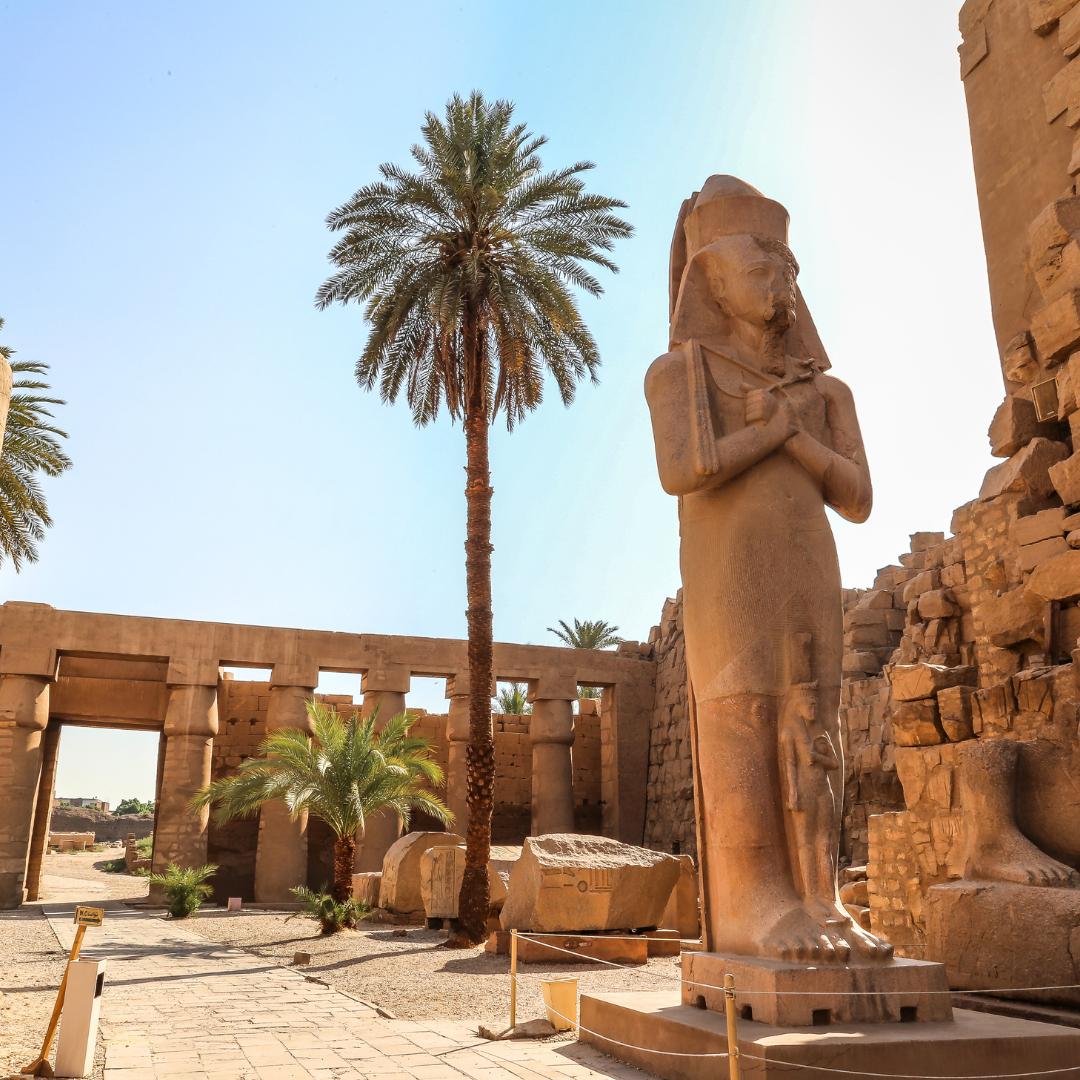Luxor by River: The Majesty of Temples and Tombs from the Nile’s Perspective

Gently coursing through the heart of Egypt, the Nile River is a liquid thread weaving together millennia of history. Upon its banks, empires have risen and fallen, and monumental tributes to gods and pharaohs stand as testaments to a past filled with mystery and grandeur. Luxor, once the ancient city of Thebes, remains one of Egypt’s most treasured gems. To approach Luxor by river is to voyage back in time, experiencing the splendors of ancient Egypt in all its glory.
Approaching Luxor: A City of Ancient Splendors
Sailing along the Nile towards Luxor, the horizon gradually fills with the silhouettes of pylons, obelisks, and grand statues. This city, often dubbed the “world’s greatest open-air museum,” unfurls majestically, offering glimpses of its illustrious past. Luxor thrived as the capital of ancient Egypt during the New Kingdom period, and its prominence is palpable. Every stone and column narrates stories of gods, pharaohs, and the vibrant civilization that once flourished here. As you draw nearer, the city seems to whisper its ancient secrets, beckoning you closer.
Karnak Temple: A Journey through Egypt’s Religious Past
Sprawling over 200 acres, Karnak is not just a temple, but a massive complex dedicated to the Theban gods and the greater glory of Egypt’s pharaohs. The sheer scale and intricacy of the site can be overwhelming. The Great Hypostyle Hall, with its mammoth columns, showcases the architectural prowess of the New Kingdom pharaohs. As the sun dances over intricate carvings and hieroglyphs, history comes alive, narrating tales of divine rituals, festivals, and the incredible processions that once graced these sacred grounds.
Luxor Temple by Night: Illuminated Beauty
If Karnak is the embodiment of grandeur, Luxor Temple is the epitome of elegance, especially when illuminated against the night’s canvas. Unlike other temples dedicated solely to gods, Luxor Temple paid homage to both the divine and the living pharaoh. As night descends and the temple is bathed in golden light, the atmosphere becomes almost ethereal. Shadows play upon ancient reliefs, statues stand as age-old sentinels, and visitors are transported to an era where the boundaries between the divine and mortal realms were believed to blur.
The Valley of the Queens: Honoring Royal Women
Tucked away in the rugged hills across from Luxor, the Valley of the Queens serves as the final resting place for many of ancient Egypt’s royal women. Each tomb, though unique, shares a common theme of respect and reverence. The tomb of Nefertari, Ramesses II’s chief queen, is particularly noteworthy. Inside, vibrant paintings depict Nefertari’s journey through the afterlife, showcasing a blend of artistry and religious belief that offers insight into how ancient Egypt viewed life, death, and immortality.
The Colossi of Memnon: Silent Witnesses to Time
Guarding the entrance to what was once Amenhotep III’s mortuary temple, the Colossi of Memnon are two massive stone statues of the pharaoh. Though much of the temple has long since disappeared, these statues remain, having silently witnessed the passage of time for over 3,400 years. They’ve greeted sunrise after sunrise, standing as stoic reminders of Egypt’s enduring legacy and the transient nature of human endeavor compared to the march of time.
Ballooning over Luxor: A Different Perspective
For those seeking a truly unique perspective, a hot air balloon ride over Luxor at dawn offers unparalleled views. As the balloon gently ascends, the city reveals itself from a bird’s-eye view. The Nile meanders like a shimmering ribbon, temples and tombs sprawl out in all their grandeur, and the juxtaposition of ancient and modern becomes beautifully evident. It’s a surreal experience, watching the sun rise over millennia of history, casting its first light on monuments that have witnessed countless dawns.
Modern Luxor: Blending History with Today’s Life
Amidst the relics of its ancient past, modern Luxor thrives. Bustling markets, vibrant streets, and the hum of daily life weave seamlessly around monumental temples and statues. Cafes offer views of millennia-old ruins, and children play in the shadows of colossi. This blend of the ancient and contemporary exemplifies Egypt’s unique charm, where the past is always present, and history is a living entity.
To journey through Luxor by river is to traverse the annals of time, experiencing the profound legacy left by one of humanity’s most magnificent civilizations. The Nile, with its gentle ebb and flow, serves as a timeless guide through tales of devotion, grandeur, and the eternal human quest for immortality. Luxor, with its temples and tombs, stands not just as a testament to what was, but a reminder of the enduring spirit of discovery that continues to inspire.


